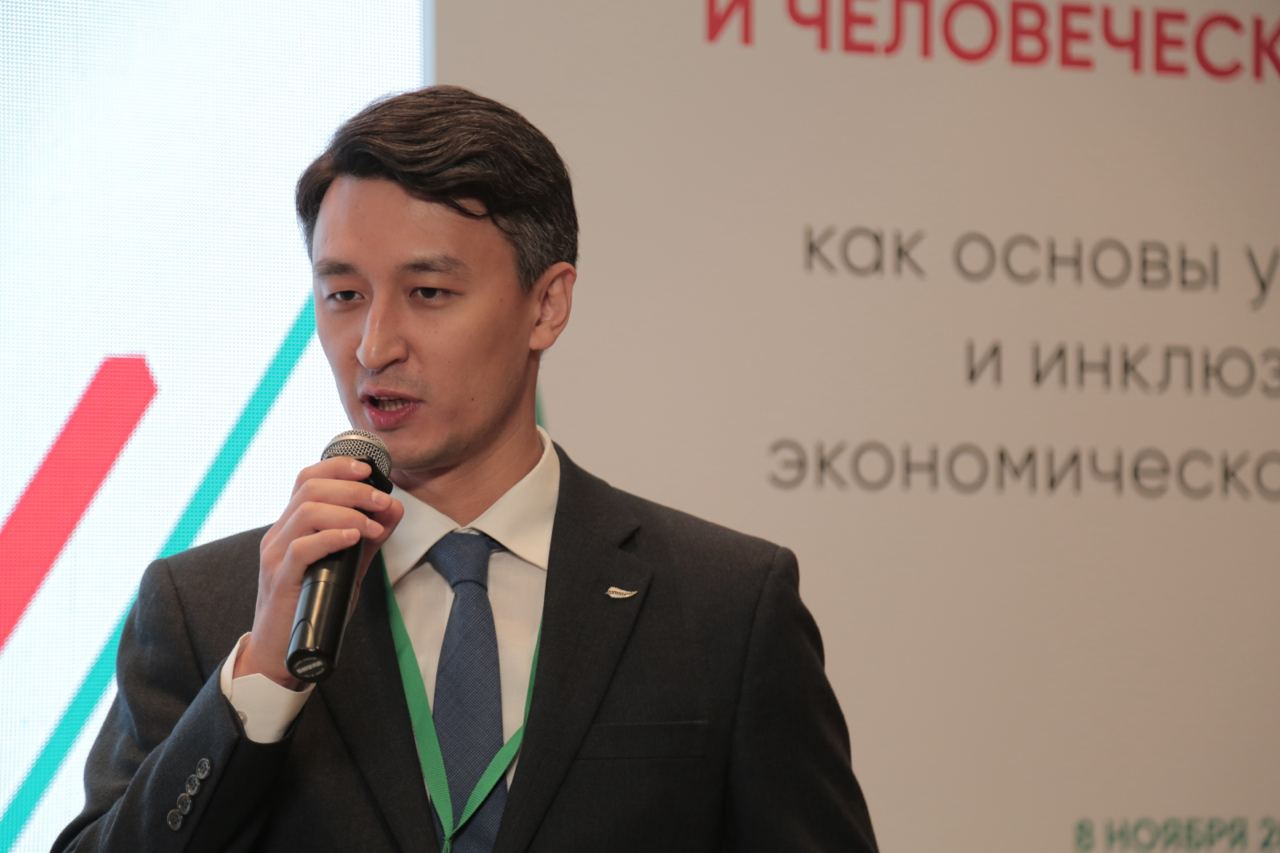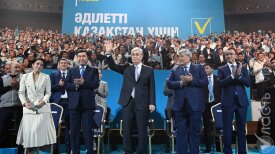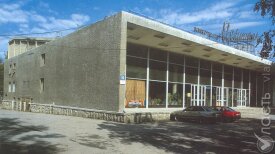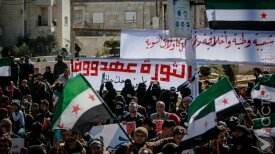The National Fund started out as a safety net for the government, to be used in times of crisis. But even during economically “good times” the government has continued to prop up its budget through withdrawals from the Fund.
This comes against the backdrop of President Kassym-Jomart Tokayev’s promise to impose greater financial discipline on the government. His ultimate goal is to double the assets of the National Fund by 2030, bringing them to $100 billion.
While doing so, however, the government was also tasked to launch a program of redistribution (National Fund for Children) and a plan to modernize strategic infrastructure with National Fund money. Combined with these plans, the president’s leniency towards withdrawals to balance the budget show how unlikely the objective of doubling the Fund’s assets is.
Vlast spoke with the dean of the School of Economics and Finance at AlmaU University, Kassymkhan Kapparov, about how the National Fund has changed in recent years. Kapparov, who also founded Ekonomist, an expert platform on Kazakhstan’s economics, answered questions regarding the vertical control of the Fund, its lack of transparency, and the contradictions in the plans for its use.
How did we get a National Fund in Kazakhstan? Why do we need it?
The National Fund was created in 2000, as the existence of secret government accounts in a Swiss bank, which later became a central part of the Kazakhgate scandal. In 2002, then-prime minister Imangali Tasmagambetov said the government had opened the accounts as a safety net for rainy days.
The parliament finally accepted this version and approved the creation of the National Fund. Through the Fund, the state was able to set aside earnings from growing oil prices.
In 1997, in a newspaper article, politician Galymzhan Zhakiyanov had touted the idea of creating a National Fund in an effort to avoid the overheating of Kazakhstan’s oil economy. But in 1997, it was too early to talk about overheating. The 1998 crisis in Asia and Russia was around the corner, as well as the dot-com crisis of the 2000s in the US.
Zhakiyanov had proposed that the Fund would be a separate, autonomous institution.
It was supposed to become a full-fledged fund for future generations and serve as a macroeconomic stabilizer. It would have kept foreign currency liquidity away from the country’s market, thus preventing a sharp strengthening of the tenge exchange rate and, as a consequence, the so-called ‘Dutch Disease’, through which the oil sector could kill the entire manufacturing industry.
Instead, the government essentially created its own reserve.
As long as I have studied the National Fund, in the past decade the issues concerning the Fund have not been discussed transparently and, most importantly, these discussions have not influenced decision making.
The National Fund is thus not an independent institution, it is managed by the president together with the government, and there is no public control over it?
The National Fund is not even a legal entity. Nobody is directly employed by the Fund. It’s an account held by the ministry of finance, which then publishes a monthly balance of tenge-equivalent assets coming in and out of the Fund.
The Central Bank in this scheme is the manager of this account. The regulator is responsible for the Fund’s investment strategy. The Central Bank’s monthly report is in US dollars. From this we can have a sense that the money stays out of the economy, in an effort to avoid ‘overheating’.
The Central Bank manages the fund through a special department which also manages gold and foreign exchange reserves.
As a rule, the National Fund's assets are invested through large international financial organizations. This is why some quite high-ranking representatives of Wall Street companies fly to Astana. They aren’t necessarily interested in Kazakhstan, but in the handling of its sovereign fund.
Society is missing from this picture. The people have really no control over the management of the National Fund. Its ‘Management Council’ is almost entirely made up of officials and headed by the president, who always has the final word. That is, the real manager of the National Fund was and remains the president.
Members of parliament cannot regulate the Fund or check its activities, with the exception of the transfers to the budget.
Yet, even the portion of National Fund assets that gets transferred to national companies cannot be scrutinized by parliament. Some deputies tried, but the law prevents any further check into national companies’ budgets.
In the past decade, experts have tried to analyze the management of the National Fund. What could you find?
In terms of transparency, the National Fund of Kazakhstan is probably one of the most opaque sovereign funds in the world. Any information about its investment strategy and asset structure that is published on government websites just lacks detail.
The Fund’s return on investment can also be considered opaque. Even if we compare it with Azerbaijan’s oil fund, the latter reveals much more information, despite it being also based in an authoritarian country. Their fund was created under former President Heydar Aliyev. Maybe it’s because they have a longer history with oil than we do, maybe it’s because they are closer to Europe.
Why is transparency so important? And why is our Fund so opaque?
Transparency is key for investors. This is how they understand how stable a National Fund is, and how much real liquid assets or junk securities it contains.
This lack of transparency is probably convenient for someone. The National Fund is a semi-secret reserve. And when the public calls for transparency, their demands are met with a wall of silence.
Our current and previous presidents have only talked vaguely about the Fund’s strategy for asset allocation. Deputies have been discouraged from any further inquiry concerning this ‘holy cow’.
Because the Fund is, in essence, an instrument created by presidential decree, it can at any time be also disbanded by presidential decree.
How is the National Fund used?
For the past 24 years, National Fund assets have been annually transferred to the budget. This is what is called ‘guaranteed transfers’, currently at a level around $8 billion.
This essentially allows the government to live beyond its means. Transfers account for approximately 25% of the budget expenditures. It is the National Fund that allows us to maintain the current economic configuration, with a high level of state participation.
Should the government stop these transfers, it would need to undertake structural reforms and optimize work at government agencies and national companies. This could however lead to social tensions. The National Fund is thus useful for political stabilization as well.
In addition, the National Fund helps maintain the tenge exchange rate at its current level. The volume of money that is transferred from the National Fund in US dollars into the economy in tenge practically makes the Kazakhstan Stock Exchange (KASE) the largest currency market in the country. Monthly transactions from the National Bank help smooth out the discrepancies in the exchange rate.
Given the rather opaque nature of these transactions, it is difficult to say exactly how much of the currency exchanged in KASE was withdrawn from the National Fund. If these figures were available, predicting the volatility of the tenge would not be so difficult.
Besides guaranteed transfers, there are also targeted ones. The president sets out the strategy, and most of these transfers have been used in the past to resolve crises. When the banking system was collapsing in 2008, a targeted $10 billion transfer helped weather the storm.
Targeted transfers, however, are even less transparent. This money is allocated directly to specific tasks without oversight by the parliament.
In the past five years, Tokayev has often repeated that Kazakhstan should move away from the practice of targeted transfers. This led to a less extensive use of this tool. But now that the government showed the need for additional cash injections, new ways of withdrawing National Fund assets came into place.
How dependent is the Fund on oil prices? What determines its dynamics?
In my 2015 study, I showed that the National Fund assets depend on the price of oil (86% according to my regression model). While the Fund is formed from several items, most of it comes from the profits on oil sales. Therefore, the National Fund can safely be called an oil fund.
There is a slight lag between the trends in the global oil prices and the dynamics around National Fund assets expenditures. Conversely, it is difficult to predict income on these assets, because it is not clear how the balance sheet changes and why, or whether investment makes or loses money.
Outside of moments of crisis, it becomes difficult to assess the dynamics of the National Fund.
Over the past decade, assets have fluctuated in the range of $50 to $60 billion. We cannot say anything definitive about these dynamics. We can only guess that amount X was withdrawn because of an increase in the price of oil.
Without accounting for transfers, the statistics at the ministry of finance show that the National Fund assets stay flat. But why? The management concept of the Fund says it should hold at least the equivalent of 30% of the country’s GDP. So the government keeps this minimum amount and withdraws the rest.
This, however, means that in a ten-year horizon, we are unlikely to witness the doubling or tripling of National Fund assets.
Is it a common practice to cover the budget deficit with Fund money?
Budget expenditures soared sharply in the early 2000s, together with higher oil prices. Officials had to find ways to spend money and turned to large-scale projects. Like the development of Astana’s left bank or the 2014 Nurly Zhol program on infrastructure. These were budget projects that could be beefed up by targeted withdrawals from the Fund.
Another element is the rescuing of national companies, which I call ‘the invisible public debt’. These companies have substantial debt, for which the government and the Central Bank become responsible. When these companies risk a default, the state intervenes.
This was the case in 2015, when the Central Bank bought a 10% stake in Kazmunaigas (KMG). The price of oil at the time had dropped and the government injected cash because it could not afford a KMG default.
My estimate of this public debt was around 26% of the GDP in 2016, compared to the official figures, mentioning a 6-8% burden on the state coffers. The state help to national companies also boosts their investment grade rating and makes it easier for state-owned companies to borrow abroad.
And since these companies could get cheap money, they kicked off large infrastructure projects such as the Kashagan offshore oil and gas field or the construction of railways, highways, and ports. This is how they rapidly accrued debts after 2008.
Does it follow that, without the National Fund, the current political regime would have been unsustainable?
Yes, this entire massive architecture of presidential power would be impossible without the Fund. Kazakhstan would not be a super-presidential country. We would have more transparency regarding the budget deficit, its structure would be visible, and all expenses would be accountable to parliament. This would create space for discussion.
But if the president can close the budget deficit with just a signature on a decree, then there’s no point in debating.
The Central Bank only acts as a performer of the president’s decisions. Now, the goal is for National Fund assets to reach a level of $100 billion. The Central Bank is not going to say no to this.
How is this $100 billion goal achievable by 2030?
The devil is in the details. You can reach the $100 billion goal in just a couple of years, especially if those are not ‘real’ billions. A recent scheme has in fact allowed withdrawals from the Fund without affecting its balance sheet.
Through this mechanism, the National Fund buys shares of a state-owned company, the company receives money and transfers part of it to the republican budget. Recently, National Fund assets were used to buy KMG shares this way.
This is a dangerous precedent, because even under [former President Nursultan] Nazarbayev there were only two formal channels, targeted and guaranteed transfers. The creation of this third channel was probably done in an effort to circumvent the limitations of the previous two.
Can this lead to a less liquid portfolio at the Fund?
This mechanism creates a loophole through which the National Fund could turn from a liquid money and stock reserve into a holder of toxic assets. While the previous model might have not earned a lot of money, at least it was being protected.
Now we can plan for $100 billion, but we don’t know whether this will be a liquid or illiquid figure.
Поддержите журналистику, которой доверяют.











